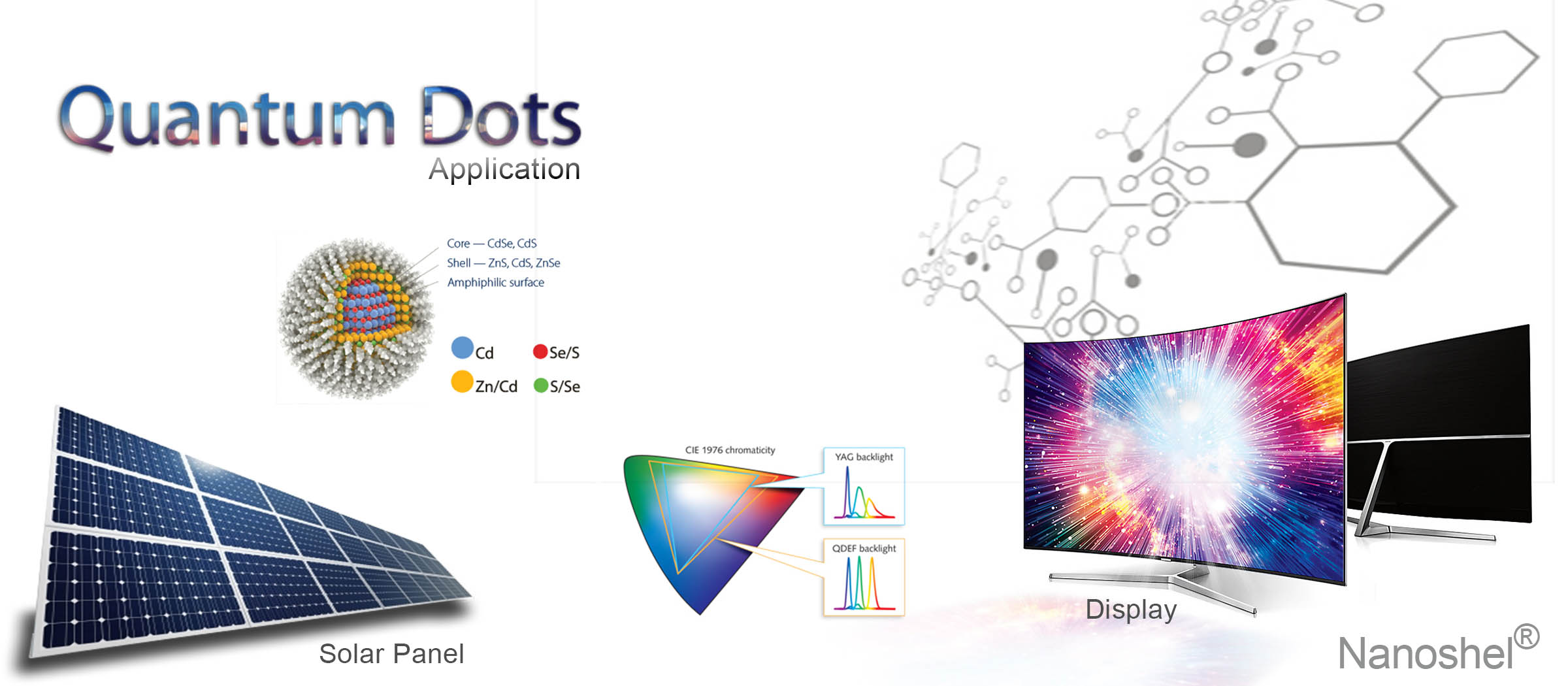Quantum Dots Cell Labeling
Cadmium Selenide /Zinc Sulphide Quantum Dots-640nm
Quantum Dots Cell Labeling
Cadmium Selenide /Zinc Sulphide Quantum Dots-640nm
| Product | Cadmium Selenide /Zinc Sulphide | |
| Stock No. | NS6130-12-000126 | |
| CAS | 1306-24-7 | Confirm |
| Purity | 99.9% | Confirm |
| Composition | CdSe/ZnS | Confirm |
| Emission Peak | 640nm | Confirm |
| Quantum Yield | 50-70% | Confirm |
| Average Particle Size (FWHM) | 25-30nm | Confirm |
| Application | Cell Imaging Application | |
| Solvent | Toulene | Confirm |
| Quality Control | Each Lot of was tested successfully | |
| Main Inspect Verifier | Manager QC | |
Typical Chemical Analysis
| Assay | 99.9% |
| Other Metal | 800ppm |
Expert Reviews
Cadmium Selenide /Zinc Sulphide

Contact Us
From us, you can easily purchase Silver Nano particles as a new generation of Antimicrobials (Ag, Purity: 99.9%, APS: 50–80 nm, Metal basis) at great prices. Place an online order and we will dispatch your order through DHL, FedEx, UPS. You can also request a quote by mailing us at sales@nanoshel.com. We invite you to contact us for further information about our company and our capabilities. At Nanoshel, we look forward to your suggestions and feedback.
Email Us:
sales@nanoshel.comcmg@nanoshel.com
🔆
Follow Us:
Direct Call Us:
USA – Sales/Research
+1 646 470 4911
+1 646 470 4911
UK – Sales/Research
+44 1782 454 144
+44 1782 454 144
Ireland – Sales/Research
+354 71 985 3714
+354 71 985 3714
India – Sales/Research
+91-9779550077
+91-9779238252
+91-9779550077
+91-9779238252
Note:
*Exchanges of materials/products are not permitted. Nanoshel does not offer refunds.
*US Dollar Cheques Not Accepted, Only Bank TT/Credit Cards Accepted
*Exchanges of materials/products are not permitted. Nanoshel does not offer refunds.
*US Dollar Cheques Not Accepted, Only Bank TT/Credit Cards Accepted
